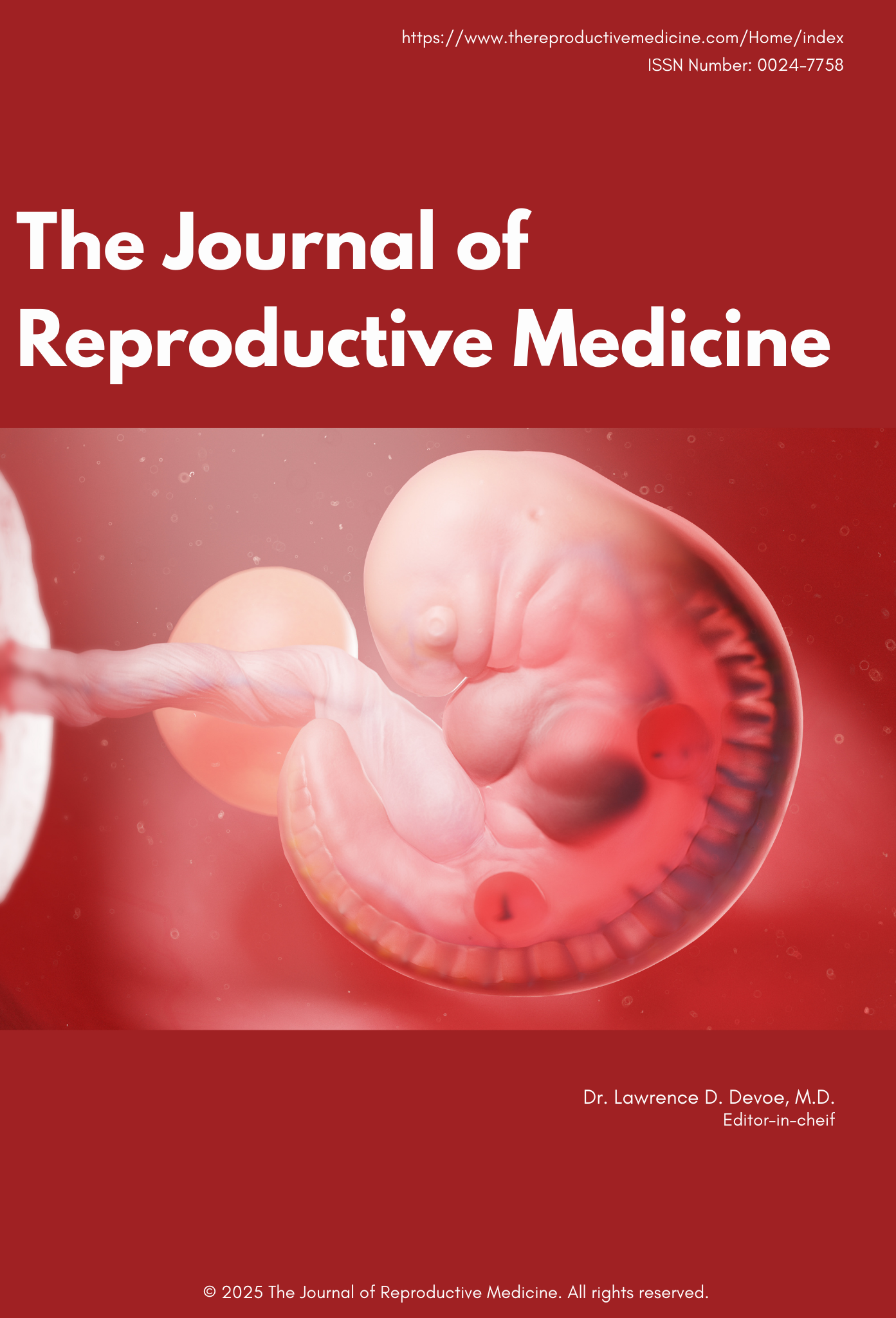Volume 55, Number 3, June2010
| Editorial | |
| 181 | |
| Symposium | |
| Gestational Trophoblastic Disease | |
| 182 |
Ross S. Berkowitz, M.D. Guest Editor
|
|
|
|
| 184 |
Donald P. Goldstein, M.D.
This article reviews the past history, current status and future directions of gestational trophoblastic neoplasms.
|
|
|
|
| 194 |
Rachel M. Clark, M.D.,�Nicole S. Nevadunsky, M.D.,�Sue Ghosh, M.D.,� Donald P. Goldstein, M.D.,�and�Ross S. Berkowitz, M.D.
While gestational trophoblastic neoplasia is highly sensitive to chemotherapy, hysterectomy does play an important role in the management of some patients, and this role is changing over time.
|
|
|
|
| 199 |
John R. Lurain, M.D.,�Diljeet K. Singh, M.D., Dr.PH.,�and�Julian C. Schink, M.D.
The use of EMA-CO chemotherapy as primary treatment and platinum-based chemotherapy along with surgical excision of resistant disease as secondary treatment of metastatic high-risk gestational trophoblastic neoplasia results in a survival rate of 90%.
|
|
|
|
| 208 |
Kevin M. Elias, M.D.,�Donald P. Goldstein, M.D.,�and�Ross S. Berkowitz, M.D.
The New England Trophoblastic Disease Center experience treating women over age 50 presenting with a new diagnosis of complete hydatidiform mole is reviewed, and surgical therapy with hysterectomy is recommended.
|
|
|
|
| 213 |
Madeleine C. Macdonald, M.B.Ch.B.,�Ramachandran Ram, M.B.B.S.,�John A. Tidy, M.D.,�and�Barry W. Hancock, M.D.
This study compares the characteristics and outcomes of patients referred with choriocarcinoma to the Trophoblastic Screening and Treatment Centre in Sheffield, U.K., from 1976 to 2008.
|
|
|
|
| 219 |
Lori Hoffner, M.S.,�W. Tony Parks, M.D.,�Steven H. Swerdlow, M.D.,� Jason C. Carson, M.S.,�and�Urvashi Surti, Ph.D.
The FICTION technique is useful for simultaneously evaluating genotype and p57KIP2 immunostaining of unusual molar pregnancies, leading to accurate diagnosis and avoiding false interpretation of p57KIP2 results.
|
|
|
|
| 229 |
Ma. Stephanie Fay S. Cagayan, M.D.
Success in treating patients with vaginal metastases from gestational trophoblastic neoplasia results from using effective initial chemotherapy regimens based on prompt and correct assignment of stage and prognostic risk score and the aggressive use of individualized ultimodality treatment.
|
|
|
|
| 236 |
Neil J. Sebire, F.R.C.Path.,�and�Michael J. Seckl, F.R.C.P.
Published evidence examining immunohistochemical expression of a range of antigens in hydatidiform moles indicates that, while there are many differences between molar and nonmolar placentas, current evidence does not support the use of any single marker in clinical practice to predict biological behavior.
|
|
|
|
| 247 |
Bing Han, M.D., Yang Xiang, M.D., Gui-Hua Sha, Ph.D., Hao Zhang, B.D.,�and� Xin Liu, B.D.
We established a floxuridine-resistant human choriocarcinoma sub-line JeG-3/FUDRA which shows 31.62-fold resistance relative to the parent JeG-3 cell line.
|
|
|
|
| 253 |
Vilmos F�l�p, M.D., Ph.D., D.Sc.,�Ivan Szigetv�ri, M.D.,�J�nos Szepesi, M.D.,� Gy�rgy V�gh, M.D.,�J�zsef B�torfi, M.D.,�Zoltan Nagym�nyoki, Miklos T�r�k,�and�Ross S. Berkowitz, M.D.
Chemotherapy, surgical intervention and other supportive care resulted in a 100% remission rate in cases of nonmetastatic and metastatic low-risk disease at a national trophoblastic disease center in Hungary.
|
|
|
|
| 258 |
Paulo Belfort, Ph.D.,�Angela M. Baptista, M.D.,�and� Oswaldo Cardoso Valle Filho, M.D.
This presentation gives an overview of gestational trophoblastic disease in a Referral Center in Rio de Janeiro, Brazil.
|
|
|
|
| 261 |
Zoltan Nagymanyoki, M.D., Ph.D.,�David Kindelberger, M.D.,�Rachel Clark, M.D.,�Noah Rodriguez, M.D.,�Vilmos Fulop, M.D., Ph.D.,�and�Ross S. Berkowitz, M.D.
Cellular immune response is investigated in younger and older patients with compete molar pregnancies to better understand the immunobiology of gestational trophoblastic diseases.
|
|
|
|
| 267 |
Ma. Stephanie Fay S. Cagayan, M.D.
Current outcomes of treatment for Filipino gestational trophoblastic neoplasia patients appear much improved due to increased efforts from trophoblast specialists to educate general obstetrician-gynecologists in prompt recognition of the disease, initial management and appropriate referral of these patients to specialty centers.
|






